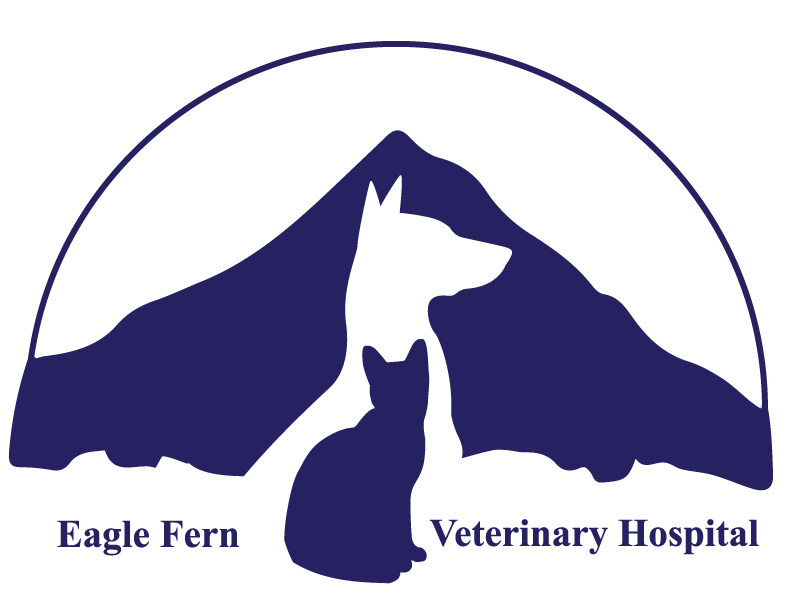|
 Allergies Allergies
Atopy or allergic dermatitis is an inherited predisposition to develop allergic symptoms after repeated exposure to some otherwise harmless substance, an "allergen". Allergens are absorbed through the skin, inhaled or ingested. Animals can be allergic to pollens of weeds, trees, grasses, house dust mites, mold, feather, animal danders (cat, horse, cow), insects (fleas, biting insects), and storage mites found in grain and flour foodstuffs in old feed bags or unwashed food containers.
Most atopic animals begin to show their allergic signs between 6 months and 3 years of age. Because of the hereditary nature of the disease, several dog breeds including Golden Retrievers, Labrador Retrievers, most terriers, Irish and English setters, Lhasa Apsos, Dalmatians, bulldogs, beagles, miniature schnauzers and Chinese Shar Peis, are more commonly atopic. It is advisable to spay or neuter affected individuals.
Atopic dogs usually rub, lick, chew, bite, or scratch at their feet, muzzle, ears, armpits, or groin, causing hair loss and reddening and thickening of the skin. Cats show hair loss on the ventral abdomen, thighs and forelimbs; itchiness at the head or neck; small scabby lesions over the back, sides and head; itchy plaques on lips, thighs or ventral abdomen, and lesions on the chin. Bacterial and yeast skin infections occur secondary to the trauma of scratching and inflammation resulting in a rash and oiliness to the skin. Ear hematomas, ear infections, upper respiratory signs, conjunctivitis and asthma may also be signs of allergies.
Diagnosis of atopy is largely based on history of an initial seasonality to the skin problem, location of clinical signs, and ruling out food allergy. Eventually, the atopic individual may be itchy year round. A complete blood count may show an increase in the number of eosinophils and basophils. Testing for allergies can be done with skin testing or a blood test to determine what the animal may be allergic to. Cytology of the skin may reveal a bacterial and/or yeast infection.
Allergy treatment is directed against bacterial and yeast infections which contribute to itchiness and inflammation. Inflammation is controlled by avoidance of the allergen and administration of medications including topical and oral anti-inflammatories. Allergy shots can desensitize the pet to the substances it is allergic to.
Bacterial infections are treated orally and topically. Superfical or localized bacterial infections are treated with antibiotics for 3 weeks and severe or generalized infections for 1-2 weeks beyond resolution. Patients with recurrent skin infections can be placed on pulse antibiotic therapy after the infection is in remission, giving antibiotics for 2-3 days of each week or a low dose every day. Antibacterial shampoos and conditioners are used once weekly. Antibacterial wipes are used 1-2 times daily then every other day for maintenance. Topical antibiotic ointment can be used for early treatment of recurrent lesions. Medications that modify the immune system may also be effective for some individuals.
Yeast infections are treated orally with ketoconazole 1-2 times daily for 2-4 weeks. Recurrent infections are treated 1-2 times daily for 2-3 days of each week. Antifungal shampoos and conditioners are used every 3 days for 2-3 weeks, and then used at a reduced frequency for maintenance treatment. Between bathings topical antifungal medication can be applied once to twice a day, then twice weekly for maintenance therapy.
Minimizing the animal's exposure to allergens will help decrease allergic signs. Because absorption of allergens occurs through the skin, frequent bathing of the whole pet or rinsing an animal's feet after spending the day in grassy/weedy environments will remove allergen from the skin. Avoid walking through fields with high grass or weeds and on fresh cut lawns. To avoid mold, do not allow the pet in rooms with high moisture (bathroom, laundry room), reduce the number of house plants and dehumidify the environment. For house dust mite sensitivity remove carpeting or matting, thoroughly clean with a high efficiency vacuum, cover mattresses with plastic, frequently damp mop areas most frequented by your pet, and regularly wash and thoroughly dry bedding. Avoid stuffed toys. Pets should not sleep on cushioned furniture and should be kept in uncarpeted rooms. Wash food containers. Area treatment flea sprays containing methoprene may also be effective in reducing house dust mite numbers in the environment.
Topical medications can be used to help with inflammation and itchiness, lessening the amount or the need of oral steroids. Shampoos and conditioners that have anti-pruritic action can treat and prevent the
development of dry skin which may be a product of the disease or repeated bathing. Use cool water when bathing and leave the products on for at least 10-15 minutes for full effect. Topical glucocorticoid steroids are used to treat focal areas where inflammation flares up. However, overuse of topical steroids over a long period of time can also be harmful to the pet. Tacrolimus, a potent anti-inflammatory that is not readily absorbed from the skin, is helpful for focal areas of inflammation on the feet or around the anus.
Glucocorticoid steroids effectively help with itching and inflammation. However, because of adverse side effects associated with long term usage, every effort should be given to provide glucocorticoid alternatives. When this is not possible, the patient is maintained on less potent steroids and using the lowest dose possible every other day. An antihistamine given along with the steroid will further reduce the dose of steroids required to relieve the symptoms of allergy.
Fatty acids have anti-inflammatory and anti-pruritic effects. High dosages of omega 3 fatty acids should be given at least a 12 week trial before ruling out their benefit. Many patients improve within the first 2-3 weeks of therapy. If a restrictive diet containing fatty acids is used the dose of fatty acids is doubled. Fatty acids when combined with antihistamines work better to reduce inflammation than either product by itself.
Antihistamines benefit about 30% of atopic patients. One can not predict which, if any antihistamine will be of help in a given individual. Try several different antihistamines, each for 2-4 weeks. Note which antihistamine is being used and what degree of benefit, if any, it may produce. If individual antihistamines appear to have failed, a combination of antihistamines may be tried.
Pentoxyfylline may be used with steroids to help lower the steroid dosage and may work synergistically with antihistamines.
Atopica, a cyclosporine, has been used with good to excellent results in 70-80% of cases. The overall beneficial effects have been shown to be similar to those of steroids without the harmful side effects of steroids. The major side effect is GI upset (vomiting, diarrhea, flatulence, cramping). Cyclosporine should be given on an empty stomach (at least 2 hours before feeding) to enhance absorption. However, if vomiting is noted, the drug should be stopped until this side effect has resolved and can be tried again with a small amount of food. Other rare side effects are gingival hyperplasia, papillomatosis, bacteriuria, bacterial pyoderma, and anorexia. Trial therapy should be at least one month. It may take longer to see the maximal benefit (45-60 days). Once the maximal benefit has been noted, the dose is reduced to every other day, then every 3rd day. If every other day dosing does not "hold" the problem, then return to daily dosing and once the problem is again quieted down, gradually reduce the once daily dose to the least amount required to control the problem. The daily dosage or frequency of administration can be reduced in about 80% of the cases. A significant number of patients may be able to have their oral cylosporine eventually stopped, with a complete remission of the disease. In that cyclosporine is expensive, it has been used in conjunction with ketoconazole to increase blood concentrations of the cyclosporine and lower the cost.
Hyposensitization or allergy shots benefit 60-70% of cases with good to excellent results. The shot formulation is based on results of a skin test or blood test. Improvement from desensitization may not be seen for 3-6 months or longer. Over the long term, 50-70% of patients on hyposensitization will require additional medication (antihistamines, steroids and/or fatty acids) to control allergic signs during part or all of the year. Maintenance shots are given every 1-2 weeks during allergy season. At the end of a year of treatment, dosages can gradually be reduced. Up to 30% of patients may have their atopy go into remission after 2-3 years of therapy and not require further allergy shots.
Good flea control should be instituted to decrease allergic symptoms associated with the flea saliva. A topical spray, Knockout, is used when the animal is bathed frequently with medicated shampoos. Advantage or Frontline topical flea medications are usually applied monthly but can safely be applied as frequently as every 2 weeks if needed to control a flea allergy.
A hypoallergenic food trial may be instituted to rule out a food allergy that may exist alongside other allergies. Food trials with homemade or commercial diets are conducted for 12-16 weeks. The pet is then challenged with the old diet to see if symptoms return or worsen.
Allergies are a lifelong problem and tend not to just go away on their own. The best chance for success is realized when you can spend the time and effort in utilizing symptomatic therapy on your pet or while your pet is undergoing the process of desensitization. Only by trial and error can the optimal therapy be formulated. This requires patience and dedication on the owner's part and frequent visits to your veterinarian to reassess therapy. If medications are given as directed the patient can be made much more comfortable. Therapy for atopy can provide a better quality of life to the pet and owner.
| 
